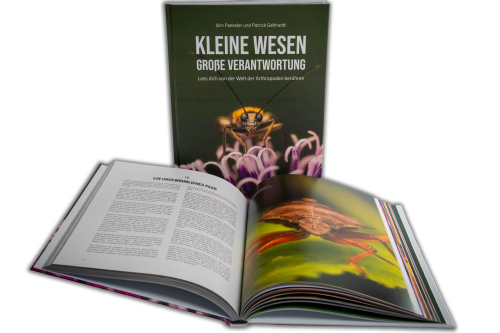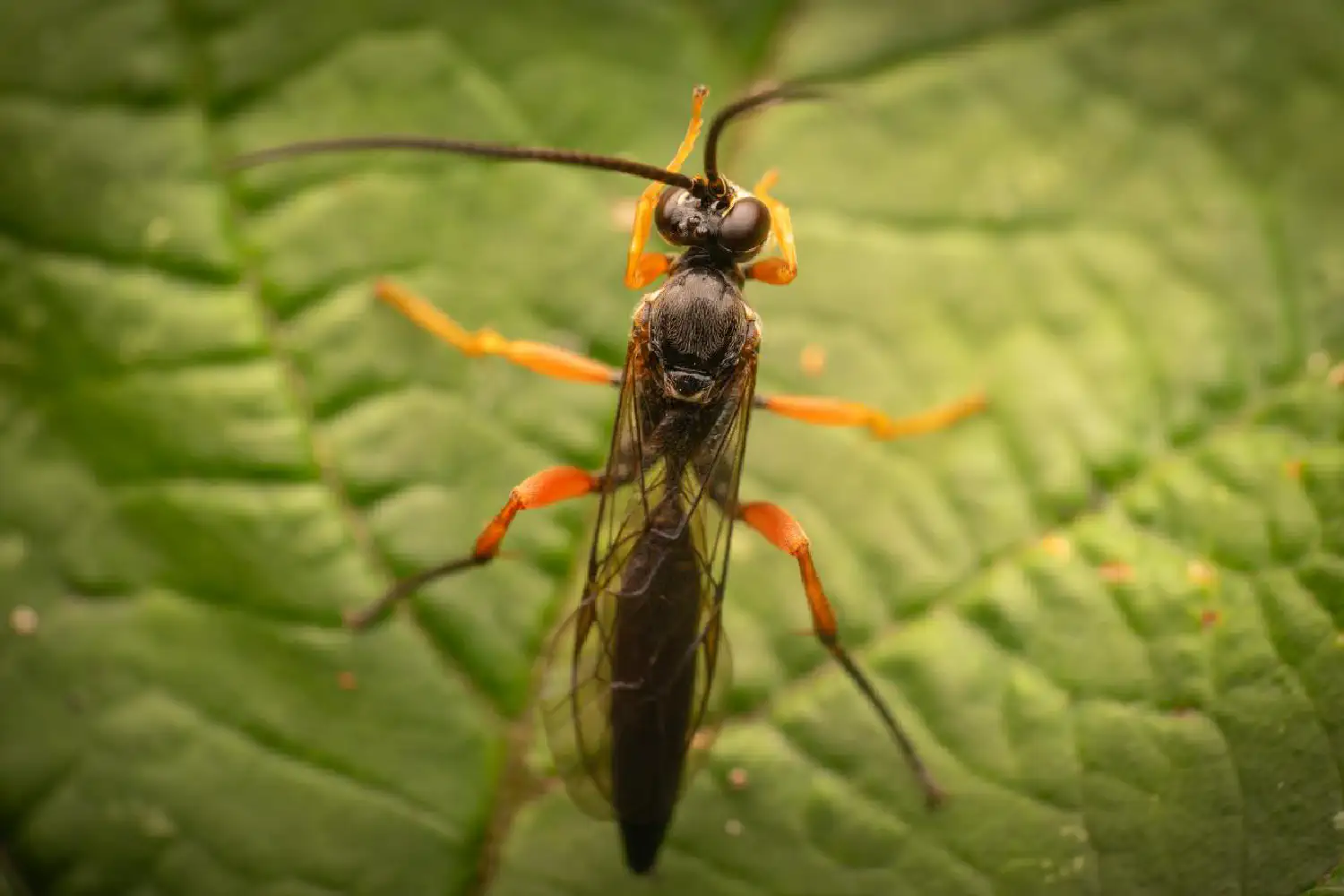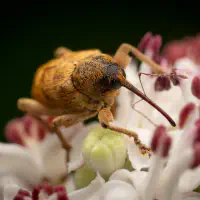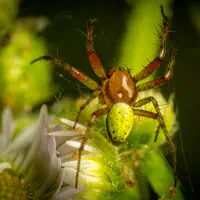Close to the big time – but I'm still happy!
Dear jury, that was a close call. I know you put a lot of effort into choosing a worthy candidate for “Insect of the Year” every year, and I’ve always agreed with your choices. The chunky Typhaeus typhoeus from last year—terrific choice. The “map” from 2023 is something like the sister of the marbled white; an unusual, proud butterfly, all very well. And 2022: The Venustoraphidia nigricollis—admit it, here you were fascinated by the exotic and the unusual body structure; am I right? And if so, then I suspect that the winner for 2025 was the same: The sabre wasp has so many fascinating details that it’s worth taking a closer look. It is large compared to other ichneumon wasps; its body length can grow up to 35 millimeters. However, this allows them to remain thin and graceful. The female’s body is black, with many white details. Males are also colorful, but tend to be more yellowish. The legs are red and thus stand out clearly from the rest of the body. Thread-like antennae and striking compound eyes complete their appearance.
Now that I’m writing this, I can’t help but compare the insect of the year with me. The reason: we are practically related. We both come from the Ichneumonid Wasps family. I am a black slip wasp and as such am definitely smaller, sometimes only 10 millimeters long. Visually, too, I am perhaps not blessed with such interesting details as my victorious cousin. But I’m still pleased that so much attention is now focused on us ichneumon wasps. Because we already have a certain marketing problem anyway.
We look really different from our black and yellow relatives, which are colloquially known as “wasps”. We don’t get on people’s nerves as much, but we also play an important role in natural pest control. Some species of ichneumon wasps are so useful that people breed them specifically, for example to control food moths or wood pests. Because our lives can be stressful and cruel—cannibalism among larvae is something that is quite common, and we are parasitic—we have often captured the imagination of philosophers and scientists. Charles Darwin found our example so frightening that he even doubted the existence of a creator in a letter to a naturalist friend. Facts that not everyone knows, but which may now at least attract the attention of some interested parties.
With this in mind, thank you, dear jury, for your choice this year! It also flatters me and the other members of my family.
With buzzing greetings
Sabine

Little beings in print
Order our calendars and books today!
Compiled with love. Printed sustainably. Experience our little beings even more vividly in print. All our publications are available for a small donation.



